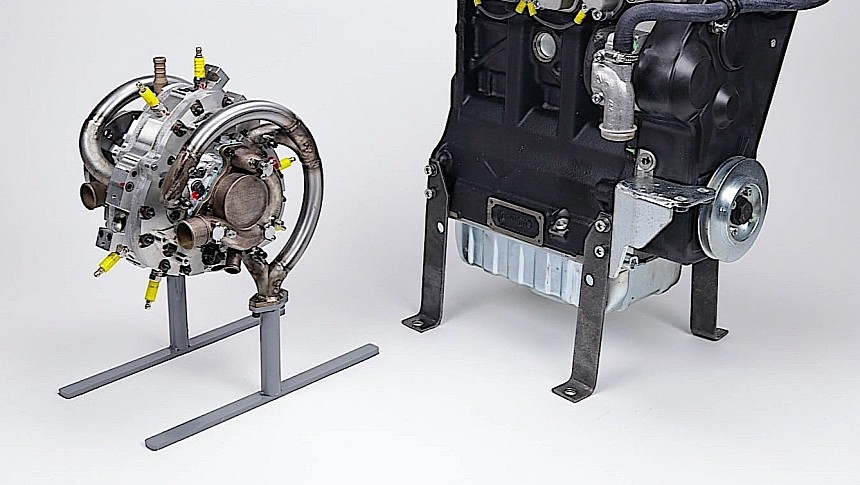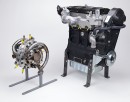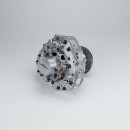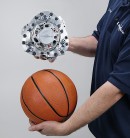One American general said back in the 1980s that, when it comes to warfare, "amateurs talk about tactics, but professionals study logistics." It's a phrase that more or less captures the essence of all wars that ever were, and all wars that ever will be.
Because of its highly complex nature, military logistics is perhaps more complicated to handle than military actions on the battlefield. And that's why every aspect of it is subject to improvement, provided a better way of doing things is available.
One key aspect of modern-day military operations is the ability to generate power on the battlefield. Despite the American military thinking about itself as the most advanced in the world, power for use on the battlefield is still produced by means of bulky generators that need trucks or other pieces of machinery to be moved from place to place.
The U.S. Army calls these generators Advanced Medium Mobile Power Source (AMMPS), and they come in various sizes, with outputs going from 5 to 60 kW, which are generated by burning fossil fuels.
It's some of these systems' size and weight that make them a real burden for soldiers on the battlefield, and that's exactly what an engine company called LiquidPiston hopes to change with a design we know as the XTS-210.
XTS-210 is in essence a rotary engine no bigger than a basketball. Comprising just two moving parts, the rotor and the shaft, it is just 210cc in displacement, but thanks to supercharging it can deliver 25 horsepower.
That may not seem like much in the grand scheme of things, but it's high enough to catch the eye of the American military, which plans to use the XTS-210, also referred to as the X-engine, in drones, sea and air vehicles.
There was also talk not long ago about the tech being ideal for power generation, and confirmation of that came last week, when LiquidPiston announced its engine will go into the 10 kW field generator the company is developing for the U.S. Army.
The solution, which will be field-tested by the Army at an undisclosed date and in an undisclosed setting, should be 75 percent lighter than a corresponding AMMPS, and also small enough (9 cubic feet/ 0.25 cubic meters) to be carried by a bunch of soldiers instead of a truck.
The unnamed generator will also need eight percent less fuel to work, and it should deliver four times the power for the same transport volume, meaning it would have to be refueled a lot less than existing solutions.
LiquidPiston is at the receiving of an $8.3 million contract for this work. No info on when the new generator should be ready has been provided.
One key aspect of modern-day military operations is the ability to generate power on the battlefield. Despite the American military thinking about itself as the most advanced in the world, power for use on the battlefield is still produced by means of bulky generators that need trucks or other pieces of machinery to be moved from place to place.
The U.S. Army calls these generators Advanced Medium Mobile Power Source (AMMPS), and they come in various sizes, with outputs going from 5 to 60 kW, which are generated by burning fossil fuels.
It's some of these systems' size and weight that make them a real burden for soldiers on the battlefield, and that's exactly what an engine company called LiquidPiston hopes to change with a design we know as the XTS-210.
XTS-210 is in essence a rotary engine no bigger than a basketball. Comprising just two moving parts, the rotor and the shaft, it is just 210cc in displacement, but thanks to supercharging it can deliver 25 horsepower.
That may not seem like much in the grand scheme of things, but it's high enough to catch the eye of the American military, which plans to use the XTS-210, also referred to as the X-engine, in drones, sea and air vehicles.
There was also talk not long ago about the tech being ideal for power generation, and confirmation of that came last week, when LiquidPiston announced its engine will go into the 10 kW field generator the company is developing for the U.S. Army.
The solution, which will be field-tested by the Army at an undisclosed date and in an undisclosed setting, should be 75 percent lighter than a corresponding AMMPS, and also small enough (9 cubic feet/ 0.25 cubic meters) to be carried by a bunch of soldiers instead of a truck.
The unnamed generator will also need eight percent less fuel to work, and it should deliver four times the power for the same transport volume, meaning it would have to be refueled a lot less than existing solutions.
LiquidPiston is at the receiving of an $8.3 million contract for this work. No info on when the new generator should be ready has been provided.






